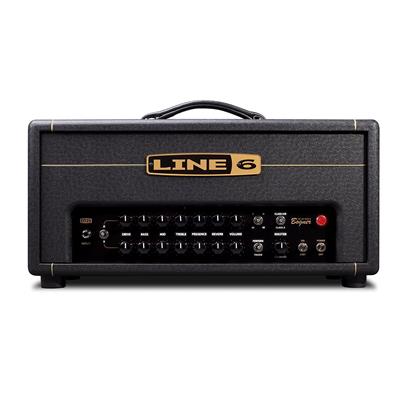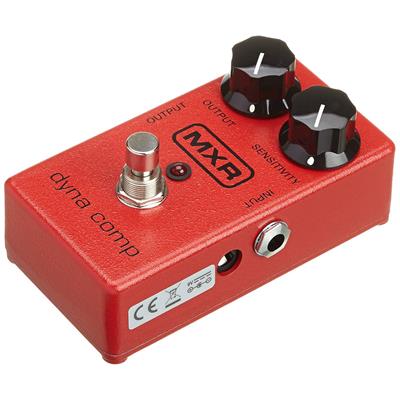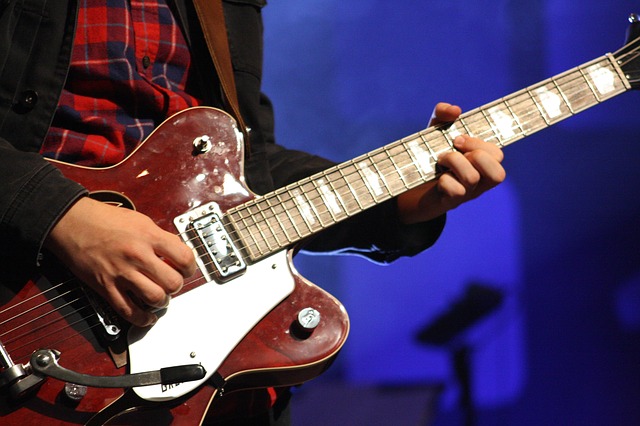| Build Quality: |  |
| Hardware: |  |
| Electronics: |  |
| Sound: |  |
| Value: |  |
| Average: |  |

Pros:
- Selectable operating class and power tube mode
- Diverse amp voicings and modeling
- Convenient and easy to use
Cons:
- The volume maybe a bit uneven at certain settings
What happens when two major companies start working together to create something different and unique? When someone like Reinhold Bogner teams up with the Line 6 and develops an amp? Well, the answer is simple: mind-blowing results follow. DT25 head was produced in conjunction with Bogner Amplification and delivers boutique quality at an affordable price. It is not a one-trick pony, and its features and sounds are not set in stone. Everything in this amp is suited to the musician, enabling the user to configure much more than one would expect. Want to know what is so special about DT25? Then stay with me and let’s dive into the tube haze together!
Features
Line 6 has taken up a new vision when it comes to the features. Instead of standard properties that most of the amplifiers brag about, DT25 head offers something completely different. But before we get to the interesting stuff, I just want to mention that this tube amp has 25 watts of modifiable power (more on that later). It is equipped with one 12AX7 and two EL84 tubes. It has two channels, A and B, which can be distinguished from the classic clean and dirty channels. You have the option to change the operating class for each of them.
Class A offers dynamics, while Class AB has more headroom. You can go from 25 to 10 watts just by toggling a switch, choosing either fixed bias or cathode bias at the same time. DT25 head also offers selectable power tube mode, allowing you to pick out Pentode or Triode. This amp has four voicings (Classic American Clean/Tight NFL (I), British Crunch/Medium NFL (II), Class A Chime/Zero NFL (III), Modern, High-Gain/Resonant NFL (IV)) that have Negative Feedback Loop topology with HD preamp and tone stack.
As for the built-in effects, we have the modeled spring reverb here. Now, while sockets and jacks are sometimes the most boring part of the features, this time they change the whole game. We have a single input for your instrument, MIDI In and Out, a single input for the footswitch (three buttoned TRS or two buttoned TS), effects loop Send and Return, cabinet simulated Direct Output, 5 speaker outputs with 4, 8, and 16 ohms of impedance, as well as L6 Link which pairs the amp with POD HD multi-effects processors.
Controls
In order to guarantee maximum precision and meticulousness, Line 6 decided to pack the control panel with all the needed knobs. Each channel has its own encoders, which allow you to nail the perfect sound out of the DT25 head. Let’s get straight to the point and discuss the functionalities of each and every rotary knob or a toggle switch.
The front panel starts with the channel selector, which shifts between A and B channels. It is followed with the Drive, Bass, Mid, Treble, Presence, Reverb and Volume knobs for each channel (the upper row takes care of A, lower – one controls B). Drive modifies the amount of distortion added to your sound; Bass, Mid, Treble and Presence act as your typical EQs, but they are quite interactive and change their character depending on the selected voicings; Reverb controls the level of the effect on each channel, allowing you to vary this setting from A to B; Volume sets the output level of the selected channel.
Then we have a four-way toggle for the available voicings mentioned above. Class A and Class AB allow you to choose between these two settings, 10 or 25 watts of power and cathode or fixed bias. Pentode and Triode toggle changes the power tube operation from pentode to triode and vice versa. We also have the Master, which sets the overall level of the device. And finally, we have the Standby and Power switches, which are quite self-explanatory. On the rear panel you will find Low Volume Mode which tames down the amplifier and enables you to practice at lower levels.
Line 6 DT25 Sound
DT25 head would not be this renowned if it did not have the spectacular sound. Not only are its tones defined and scrupulous, but they also offer a substantial amount of versatility. This amplifier gives you a lot of sonic options to work with and I will tell you why in a second. Since it lets you reconfigure analog circuitry according to your taste, you end up with something that matches your needs and desires perfectly. If you like the effects, you can incorporate POD in your rig and basically unify these two devices.
DT25 will automatically match its settings with the amp models or any other option you choose on the processor, which guarantees even and well-balanced performance. When it comes to voicings, Classic American Clean with tight NFL has the character of ‘60s Blackface amps, British Crunch with medium NFL can create that signature echoes of British amps, Class A Chime with zero NFL opens up your sound, adds dynamics and chime to it, while Modern/High Gain with resonant NFL attenuates the bass response and saturates it with girth and gain.
The ability to move from pentode to triode allows you to generate either clear and commanding or quiet and round vintage tones. As you can see, DT25 head is packed with useful options, all of which are perfectly distinctive and unique.
Conclusion
In my book, there is no need to talk about DT25 head any further. The sound of this baby speaks for itself. Line 6 did an amazing job when creating this amp, since it put a lot of effort in making something fantastic with a lot of emphasis on details. The only thing left for you is to listen to demos and let your ears make final decision. Good luck!
Click here to view more from 10 Best Tube Guitar Amps.






